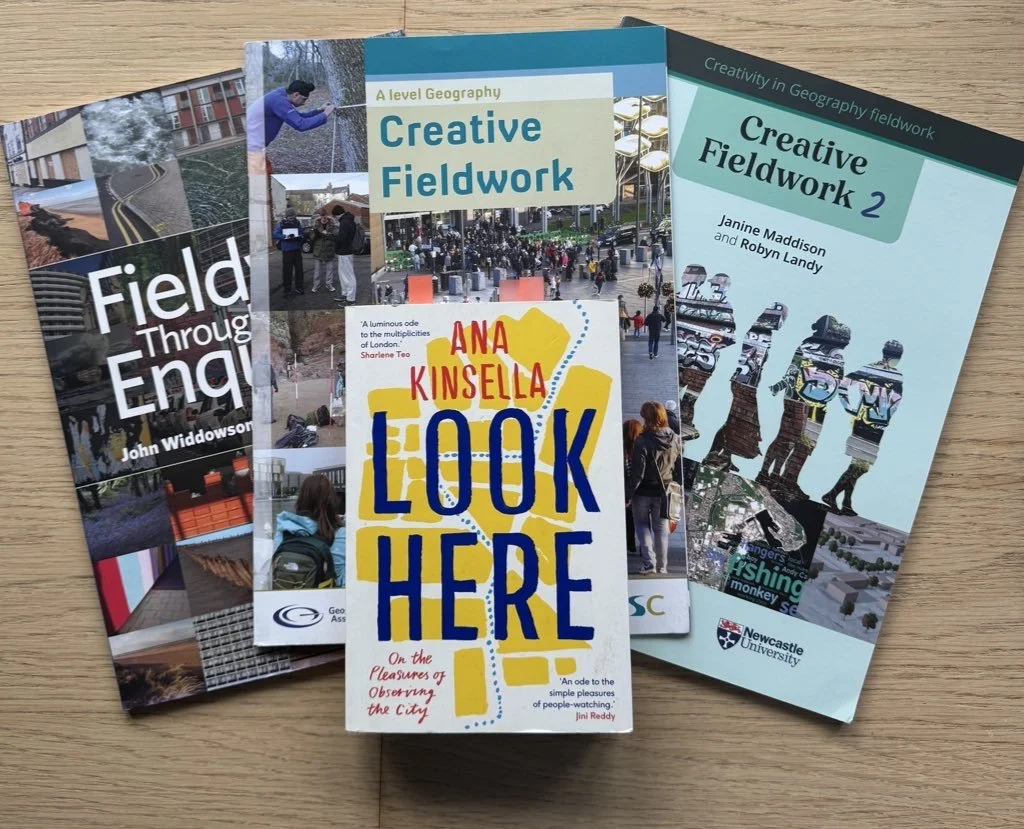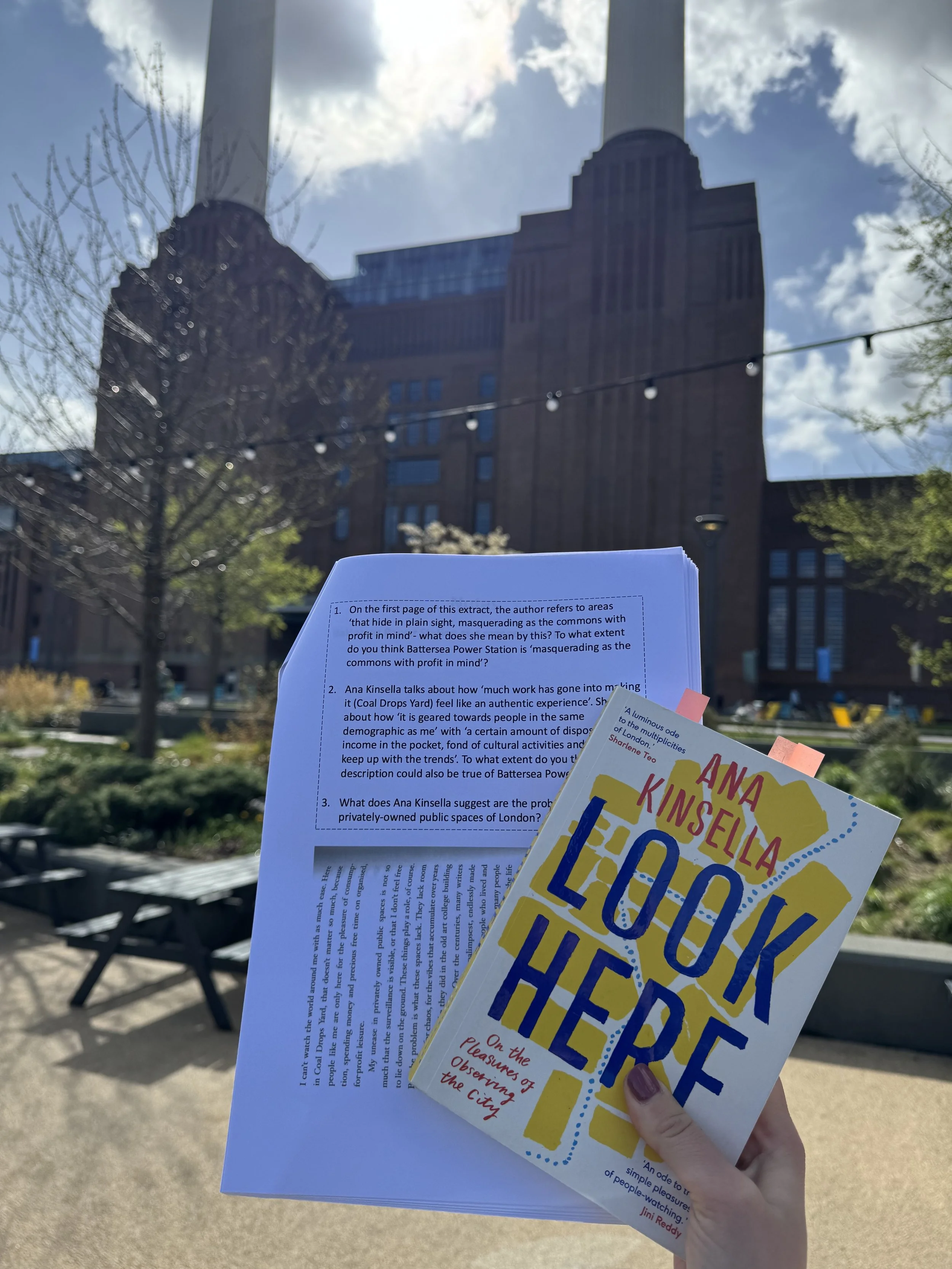Battersea Power Station fieldwork
Written in June 2025
This blog follows on from a post about the resources used to teach about the power station as an in-depth case study for EQ3 and EQ4 of the Edexcel A-Level Regenerating Places topic.
In March, I led a Trust fieldwork day to Battersea for A-Level students from across our schools. Students from four different schools attended and we had a great day exploring, discussing, and critiquing the redevelopment of the power station- this blog shares the resources and techniques we used.
The day started with an introduction to the redevelopment and the broader context of the journey to get to the Battersea Power Station that they see in front of them today- ensuring that all students had the same background knowledge of the regeneration project, regardless of whether or not they had previously studied it in class. Students sat on the wooden benches by the Coaling Jetty as I introduced the project using these notes.
Because we do lots of fieldwork cross-Trust (most recently we did a residential to Flatford Mill in January), the students who attended have already had a lot of experience of fieldwork techniques and undertaking fieldwork. For that reason, I wanted to ensure that this fieldwork day balanced using different techniques with allowing students to get a real sense of place. Having had an introduction, I set students off to complete a quiz designed to familiarise them with the scale of the site and learn more about the history. They walked a lap of the outside of the Power Station and completed this quiz as they went.
This was followed by an activity using urban drifting cards (inspired by the FSC) to wrap up this introductory section. In planning this day and the activities we undertook, the books shown below were invaluable.
Reconvening back at the wooden benches by The Coaling Jetty, students were given instructions for the next section of the day. They used rephotography to complete a field sketch of the new environment before we spoke about how the circular shape of the power station meant that random sampling using a grid system was likely the best approach to sampling the area. Students then generated their 3-4 squares to visit and set off to complete a range of techniques familiar to them:
A perception survey
An environmental quality survey
A crime prevention survey
When they returned, we discussed the findings of their crime prevention survey briefly and used this to define the focus for the next section of the day. When planning this fieldwork, I knew that I wanted look at Battersea Power Station as an example of London’s privately owned public spaces and I knew that I wanted to use a high-quality piece of text to help do so. Students were given an extract from Ana Kinsella’s Look Here that discusses this issue and asked to read the text before considering the following questions:
1. On the first page of this extract, the author refers to ‘the ones that hide in plain sight, masquerading as the commons with profit in mind’- what does she mean by this?
2. How does Ana Kinsella describe the change to the Coal Drop Yard area of King’s Cross?
3. What does Ana Kinsella suggest are the problems with these privately-owned public spaces of London?
Although this book doesn’t discuss Battersea explicitly, it was obvious to students (based on their experience of the area so far) how this redevelopment project was an example of what Kinsella was describing, even though she used the example of Coal Drop Yard. This was the first time that I’d used a text extract ‘in the field’ whilst undertaking fieldwork but I was really pleased with its impact. Students seemed to engage with the ideas of the text even more in situ than they would have in the classroom and, as they read, started to look around for evidence of the ideas they were reading about. It was incredible timing when, just as they were reading about the private security forces that patrol these privately owned public spaces, one such security guard walked past (and preceded to hoover somewhat threateningly by) our group.
We linked what they had read to their crime prevention mapping survey before they were set off to complete two fieldwork techniques that were new to them, designed to get them thinking critically about how this space was being used and by whom. At three different locations they completed a psychogeography survey and observed the different interactions they saw taking place in a 5-minute period. Both of these techniques were taken from the books photographed above. When we reconvened, we discussed their thoughts and findings briefly but both would be unpacked in far greater detail back in the classroom with their teachers.
By now, students had a sense of who they felt this development was designed for and trying to attract and so I wanted their final fieldwork activities to focus on data which may support this hypothesis. They undertook a shopping basket survey that compared the prices in Battersea General Store with those of Tesco online and those of the M&S store in the power station. They also completed a retail quality survey using this template from The Island Geographer.
To end that day, now that students had a good understanding of the regeneration project, we visited the display boards within the turbine hall to find out more. These boards detail the previous (unsuccessful) plans for the power station and I asked students to make notes on what they could learn from this information about the tension around achieving ‘successful’ regeneration.
Overall, I’m really pleased with how this fieldwork went and the mix of activities and techniques used. If you’re done fieldwork to Battersea Power Station before, please do share any other techniques that worked well!







